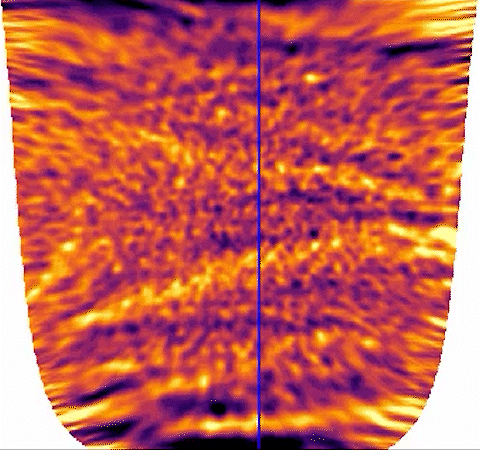Clouds on Venus
Venus, Earth’s hot sister and the setting for my book «Clouds of Venus«, is completely enveloped in a dense atmosphere with numerous layers of clouds. Nevertheless, it has much in common with Earth. Both planets are similar in size and mass, they are both in the same orbital region known as the habitable zone, they both have solid surfaces and dense atmospheres. Therefore, studying weather on Venus can help researchers better understand weather on Earth as well. To do this, it would be important to be able to observe cloud movement on Venus day and night. However, nighttime has a major disadvantage: it is dark. Therefore, until now, only the weather on the side facing daylight was easily accessible for observation from Earth.
This is where the Venus Climate Orbiter Akatsuki comes in. Launched in 2010, it is the first Japanese probe to orbit another planet. Its mission is to observe Venus and its weather system with a variety of instruments on board. Akatsuki carries an infrared imager that does not rely on illumination from the Sun. While even this cannot directly resolve details on the night side of Venus, it now puts data in the hands of researchers that they can use to indirectly observe clouds on Venus.
«Small-scale cloud patterns in direct images are faint and often indistinguishable from background noise,» says Professor Takeshi Imamura of the Graduate School of Frontier Sciences at the University of Tokyo. «To see details, we had to suppress the noise. In astronomy and planetary science, it is common to combine, to stack images. However, Venus is a special case because the entire weather system rotates very quickly. Therefore, we had to compensate for this motion, known as superrotation, to highlight interesting formations for study. Graduate student Kiichi Fukuya developed a technique to overcome this difficulty.»
Superrotation is a meteorological phenomenon that Earth is fortunate not to experience. It is a violent east-west circulation of the entire weather system around the planet’s equator, and it dwarfs all of Earth’s extreme winds. Imamura and his team are exploring the mechanisms that maintain this superrotation and believe that the characteristics of Venus’ nighttime weather could help explain it.
«We are finally able to observe the north-south winds, known as meridional circulation, at night. What is surprising is that these are in the opposite direction than during the day,» Imamura said. «Such a dramatic change cannot occur without significant consequences. This observation could help us build more accurate models of the weather system on Venus, which will hopefully clarify some long-unanswered questions about weather on Venus and probably on Earth.»

